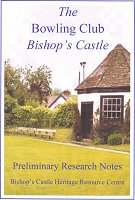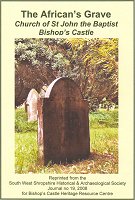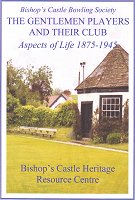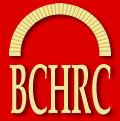Research Projects

Research Projects
Our volunteers have carried out a number of research projects, mainly on topics relating to Bishop’s Castle, which are described below. Please contact us to buy copies of any of these research notes from BCHRC. We have an on-going programme of research projects planned for the future. We are happy to welcome new volunteers who are interested in research.




- As part of a Heritage Lottery funded project to restore Bishop’s Castle’s eighteenth century octagonal Bowling Club pavilion, BCHRC was commissioned to research the background to the game, and to the Bowling Club, which was built on part of the site of the original bishop’s castle.
- This research raised some interesting questions about the bowlers themselves, and led to further research on the Gentleman Players and Their Club, which aimed to populate the Bowling Club at different times in its history and to look at its social context.
- The present Town Hall building has been a focal point in the economic, political and social life of Bishop’s Castle since the mid-eighteenth century, and is of considerable value to the heritage of the area. Earlier civic buildings have, for various reasons, disappeared from view, but the current Town Hall provides the links to past local government and local social history.
- In the churchyard of St John the Baptist Church, Bishop's Castle, is an
interesting grave. It is beautifully decorated, and bears the following
carefully incised inscription:
Here lieth the body of I.D.
A native of Africa
Who died in this town
On Sept 9th 1801
'God hath created of one blood all nations of men'
Acts Ch 17 verse 26
Bishop’s Castle’s contribution to the 2007 bicentennial commemoration of the abolition of the transatlantic slave trade was to undertake research into the likely history of the unknown African. The text from the Acts of the Apostles is one that was used by the Abolitionists at the end of the 18th century, and it is likely that the headstone was erected by a sympathiser to the Abolitionists’ cause.
